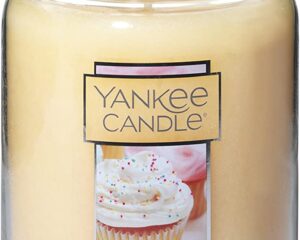If you’re reading this, then my halls are decked, my Christmas gifts purchased, and I’m likely sitting in front of a crackling fire wearing a Snuggie and drinking a mug of hot chocolate. Such is the life of a woman who has completed her Christmas shopping.
Here’s the thing: I haven’t always checked off my entire holiday shopping list before the end of November. In past years, I’ve bought way too much for my family – enough to give me pause.
Last year, I went so overboard with the number of presents I purchased that I nearly had a breakdown the week after New Year’s. Embarrassing as it was, that breakdown led me to a completely new shopping strategy for the holidays – and it’s saved my sanity already this year.
The Three Gift Rule
This shopping strategy is known by many names. Some call it the three-gift rule; others call it the three-present rule; still others call it the “Magi” rule. No matter what moniker you give it, the theory behind it remains the same; each person in your family gets three Christmas gifts – no more, no less – just like Jesus received three presents from the wise men on that first Christmas night.
I didn’t come up with this philosophy on my own. Rather, it started with a simple search online last January, as I examined my own guilty (and budget-busting) conscience. As I looked for solutions to our materialistic Christmas of 2011, I stumbled across this October 2010 post at Design Mom, where she responded from a plea from a reader in a predicament similar to mine. Here was her advice:
“At our house, Santa brings each child something to wear, something to read, and something to play with. And that’s it. There are other gifts from siblings and grandparents, but Santa just brings three.”
Here was something I could do, a shopping strategy I could live with – and, more importantly – one I could live by. But first, I’d have to tinker with it to make it my own.
Our Variation On The Three-Gift Rule
Instead of taking Design Mom’s suggestion of buying something to wear, read, and play with, my husband and I decided to customize the Christmas shopping theory to our own household. We decided on these three categories:
- An educational gift
- An “experiential” gift
- A “want” gift (this is the wild card, to make sure someone’s top “must have” doesn’t fall through the cracks)
Applying it to my children was easy. Here’s my daughter’s Christmas list (shhhh, don’t tell her I published it on the web!):
- A two-wheel bike (with training wheels) – to help her learn how to ride
- Four horseback riding lessons – for her to experience
- A full-size bed tent for her bedroom
Applying it to my husband and myself was a little tougher. It’s taken a lot of thinking, but here’s what I’ve purchased for him:
- A beer-making kit – to help him learn to make homebrews
- An afternoon at the U.S. Whitewater Center – where he can experience the thrills of rafting in a controlled environment
- A griddle – he’s been asking for a cast iron one for years
Some of these gifts may look expensive, but trust me, they’re budget-conscious. The bike and beer-making kit were bought secondhand (re: cheap!) and I’m calling in some favors to get the riding lessons at an extreme discount. All in all, I expect to spend less than $500 for all twelve gifts (three for my daughter, three for my son, three for my hubby, and three for me – provided my husband doesn’t go over budget on my Christmas gifts!), which is substantially less than we paid last year. I’ll pay for most of it using our CashBack from our Discover Card.
Reader, what is your Christmas shopping strategy to limit the damage to your budget?


Leave a Reply